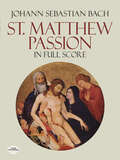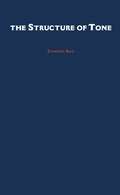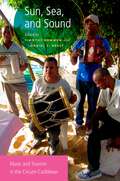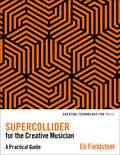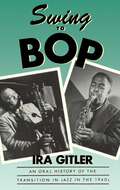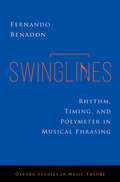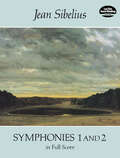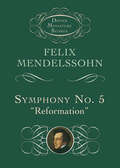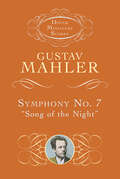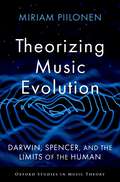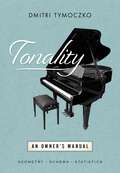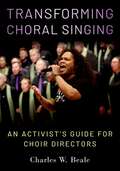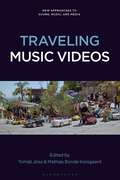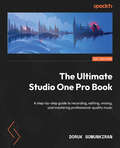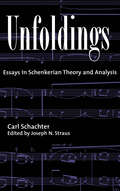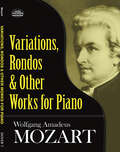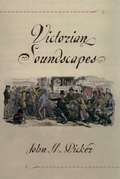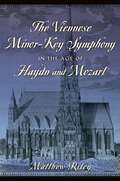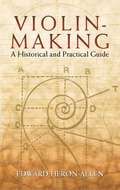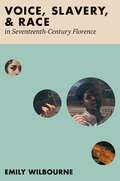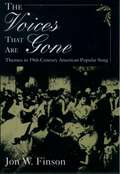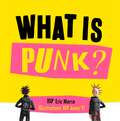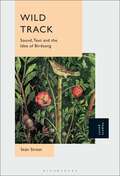- Table View
- List View
St. Matthew Passion: In Full Score
by Johann Sebastian BachOne of the most performed and recorded of Bach's major works, the St. Matthew Passion has been a focal point of concert seasons and festivals around the world for over 150 years. First performed in the late 1720s, it is a drama of epic grandeur, long considered the noblest, most inspired musical treatment of the story of the crucifixion of Christ. Bach set the text, based on two chapters from the Gospel of St. Matthew, using a large ensemble of two choruses, soloists, and two orchestras. The full score is reprinted here from the fine edition prepared by the Bach-Gesellschaft.Although the St. Matthew Passion is often held to be the apotheosis of Lutheran church music, this magnificent oratorio reaches out to its audience in the language, form, and spirit of opera. Richly dramatic and theatrical, following the general form of Baroque opera, it unfolds its deeply moving story in recitatives, ariosos, arias, chorales, and mighty choral movements. This finely produced score offers music lovers the opportunity -- at a price far lower than comparable editions -- to follow performances score in hand, and to gain a more intimate knowledge of the rich musical textures of this great masterwork.
The Structure Of Tone
by Zhiming BaoThis book argues a fresh theory about the structure of tone. Bao investigates a wide range of tone sandhi data from various Chinese dialects and other Asian tone languages, providing empirical support for his proposal that tone is a formal entity which consists of register and contour. Bao establishes a clear typological distinction between register tone languages and contour tone languages whose contour tones have a more complex structure.
SuperCollider for the Creative Musician: A Practical Guide (Creating Technology for Music)
by Eli FieldsteelSuperCollider, an open-source, cross-platform software program for real-time sound synthesis and algorithmic composition, was created by James McCartney in 1996 and has evolved to become a powerful tool for music composition and research. Written by composer and sound artist Eli Fieldsteel, who has almost two decades' experience of using SuperCollider for a variety of creative audio projects, SuperCollider for the Creative Musician is a comprehensive tutorial and reference guide for students, composers, and practitioners seeking a structured educational tour through this unique and flexible software. The book begins with platform-specific fundamentals, explores a large family of creative techniques, and then guides the reader through the nuances of assembling, navigating, and performing large-scale projects. Key topics include synthesis, sampling, sequencing, signal processing, external control, and graphical user interface design. Written with both beginners and intermediate practitioners in mind, this book is an invaluable resource for sound creators whose background falls anywhere on the spectrum between musician and computer programmer, and who seek to add new and innovative code-based techniques to their skill set. The companion website has an extensive collection of detailed code examples, which can be downloaded for exploration, experimentation, and hands-on learning.
Swing To Bop: An Oral History Of The Transition In Jazz In The 1940s
by Ira GitlerThis indispensable book brings us face to face with some of the most memorable figures in jazz history and charts the rise and development of bop in the late 1930s and '40s. Ira Gitler interviewed more than 50 leading jazz figures, over a 10-year period, to preserve for posterity their recollections of the transition in jazz from the big band era to the modern jazz period. The musicians interviewed, including both the acclaimed and the unrecorded, tell in their own words how this renegade music emerged, why it was a turning point in American jazz, and how it influenced their own lives and work. Placing jazz in historical context, Gitler demonstrates how the mood of the nation in its post-Depression years, racial attitudes of the time, and World War II combined to shape the jazz of today.
Swinglines: Rhythm, Timing, and Polymeter in Musical Phrasing (OXFORD STUDIES IN MUSIC THEORY)
by Fernando BenadonThe way rhythm is taught in Western classrooms and music lessons is rooted in a centuries-old European approach that favors metric levels within a grand symmetrical grid. Swinglines encourages readers to experience rhythms, even gridded ones, as freewheeling affairs irrespective of the metric hierarchy. At its core, this book is a nuts-and-bolts study of durational comparisons in the context of creative expression. It shows that rhythms traditionally framed as "deviations" and "non-isochronous" have their own identities. They are coherent products of precise musical thought and action. Rather than situating them in the neither-here-nor-there, author Fernando Benadon takes a more inclusive view, one where isochrony and metric grids are shown as particular cases within the universe of musical time. Rhythms that do not readily comply with the metered regime are often regarded as anomalies and deformations. The music explored in this book demonstrates how readily this paradigm vanishes once the frame is flipped from what rhythm is not to what rhythm is. As conceptualized here, swing flattens the temporal field to consider how note values relate to one another by any magnitude, not just the simple ratios of traditional theory. Musical analyses illustrate the book's concepts with the aid of transcriptions and timing-data visualizations. Variation, tuplets, polymeter, displacement, phrase structure, rhythmic counterpoint, parallel tempos, cyclical patterns, and time signatures are shown to be particular expressions that draw their contours from the swing continuum. They showcase the rich diversity of rhythm and propose ways to reframe how we think about musical time.
Symphonies 1 and 2: In Full Score
by Jean SibeliusFinland's greatest composer and a major figure in the development of Scandinavian music, Jean Sibelius (1865-1957) is admired for his complete mastery of symphonic form. Of the seven symphonies he composed, each differs greatly from the others, for Sibelius rarely approached the symphonic "problem" the same way. Each work seems committed to the thoughts, feelings, and logic of the movement.Sibelius's first two symphonies remain among his most accessible and popular. Of all his symphonic works, perhaps the First Symphony, composed in 1898-99, adheres most to classical form yet reflects the spirit of Nordic nationalism that came to be associated with the composer's music.The Second Symphony, perhaps his most expansive and melodious work in symphonic form, demonstrates Sibelius's increasing command of orchestral form and scoring. These two major works are reprinted here from the definitive full-score editions published by Breitkopf & Härtel, Leipzig.
Symphony No. 5: "Reformation"
by Felix MendelssohnIn this staple of the orchestral repertoire, Mendelssohn interprets the Reformation in symphonic terms, building to a powerful series of variations on Martin Luther's confessional chorale, Ein feste Burg ist unser Gott (A Mighty Fortress Is Our God). This miniature score is reproduced from an authoritative edition, complete with numbered movements for easy reference. Affordable and compact, it is ideal for use in the classroom, at home, or in the concert hall.
Symphony No. 7: "Song of the Night"
by Gustav MahlerMahler's seventh symphony ranks among the composer's most popular and accessible works. Possessing neither a "program" nor a folk-song theme, it is a purely instrumental composition, both hopeful and romantic in mood, with a harmonic and stylistic structure that evokes the daily journey from dusk till dawn. This miniature score is reproduced from an authoritative edition, complete with numbered movements for easy reference. Affordable and compact, it is ideal for use in the classroom, at home, or in the concert hall.
Theorizing Music Evolution: Darwin, Spencer, and the Limits of the Human (Oxford Studies in Music Theory)
by Miriam PiilonenWhat did historical evolutionists such as Charles Darwin and Herbert Spencer have to say about music? What role did music play in their evolutionary theories? What were the values and limits of these evolutionist turns of thought, and in what ways have they endured in present-day music research? Theorizing Music Evolution: Darwin, Spencer, and the Limits of the Human is a critical examination of ideas about musical origins, emphasizing nineteenth-century theories of music in the evolutionist writings of Darwin and Spencer. Author Miriam Piilonen argues for the significance of this Victorian music-evolutionism in light of its ties to a recently revitalized subfield of evolutionary musicology. Taking an interdisciplinary approach to music theorizing, Piilonen explores how historical thinkers constructed music in evolutionist terms and argues for an updated understanding of music as an especially fraught area of evolutionary thought. In this book, Piilonen delves into how historical evolutionists, in particular Darwin and Spencer, developed and applied a concept of music that served as a boundary-drawing device, used to trace or obscure the conceptual borders between human and animal. She takes as primary texts the early evolutionary treatises that double as theoretical accounts of music's origins. For Darwin, music served as a kind of proto-language common to humans and animals alike; he heard the songs of birds and the chirps of mice as musical, as articulated in texts such as The Descent of Man (1871) and The Expression of the Emotions in Man and Animals (1872). Spencer, on the other hand, viewed music as a specifically human stage of evolutionary advance, beyond language acquisition, as outlined in his essay, "The Origin and Function of Music" (1857). These competing views established radically different perspectives on the origin and function of music in human cultural expression, while at the same time being mutually constitutive of one another. A ground-breaking contribution to music theory and histories of science, Theorizing Music Evolution turns to music evolution with an eye toward disrupting and intervening in these questions as they recur in the present.
Tonality: An Owner's Manual (OXFORD STUDIES IN MUSIC THEORY)
by Dmitri TymoczkoThis encyclopaedic book proposes a sweeping reformulation of the basic concepts of Western music theory, revealing simple structures underlying a wide range of practices from the Renaissance to contemporary pop. Its core innovation is a collection of simple geometrical models describing the implicit knowledge governing a broad range of music-making, much as the theory of grammar describes principles that tacitly guide our speaking and writing. Each of its central chapters re-examines a basic music-theoretical concept such as voice leading, repetition, nonharmonic tones, the origins of tonal harmony, the grammar of tonal harmony, modulation, and melody. These are flanked by two largely analytical chapters on rock harmony and Beethoven. Wide-ranging in scope, and with almost 700 musical examples from the Middle Ages to the present day, Tonality: An Owner's Manual weaves philosophy, mathematics, statistics, and computational analysis into a new and truly twenty-first century theory of music.
Transforming Choral Singing: An Activist's Guide for Choir Directors
by Charles W. BealeChoral conductors and clinicians often focus on honing the technical and artistic elements of their choir's performance, but what is the true purpose of choral singing? Choral performances sound beautiful, but they also tell stories, "say something" to someone, and create change in them. In that fundamental sense, they are always activist. In Transforming Choral Singing: An Activist's Guide for Choir Directors, author Charles W. Beale draws from his nearly 20 years of leading major choirs in the LGBTQIA+ choral movement internationally as well as his long experience as a singer, organist, conductor, and educator to put forth a new vision for choral singing: to move audiences and change the world. Four main principles underpin this vision: connection, impact, social justice, and stylistic openness. Beale lays down a non-canonical and inclusive framework, grounded in critical musicology and pedagogy, for mission-driven and activist-oriented engagement with the choral arts, and provides practical takeaways for choral practitioners and conductors through a lively mix of practical, rigorous, and fun workshops, tips, and suggestions. Starting from the premise that all styles deserve equal space, the nine chapters cover the core aspects of choral directing, including mission, vocal sound, rhythm and groove, improvising, programming, conducting, and leading a choral community, teaching and learning, and the daily practice of equity and inclusion. The book closes with a series of calls to action and lays out a potentially transformative activist vision for the whole field, which foregrounds participation and engagement, and conceives of all choral singing as a powerful catalyst for musical and social change. The result is a provocative and contemporary approach to building choral communities with profound implications for why we sing, what we sing, how we sing, and how we conduct, teach, rehearse, and lead a choral community.
Transpositions: Migration, Translation, Music (Contemporary French and Francophone Cultures #79)
This publication benefited from the support of the Institute for Scholarship in the Liberal Arts at the University of Notre Dame.This collective volume concentrates on the concept of transposition, exploring its potential as a lens through which to examine recent Francophone literary, cinematic, theatrical, musical, and artistic creations that reveal multilingual and multicultural realities. The chapters are composed by leading scholars in French and Francophone Studies who engage in interdisciplinary reflections on the ways transcontinental movement has influenced diverse genres. It begins with the premise that an attentiveness to migration has inspired writers, artists, filmmakers, playwrights and musicians to engage in new forms of translation in their work. Their own diverse backgrounds combine with their awareness of the itineraries of others to have an impact on the innovative languages that emerge in their creative production. These contemporary figures realize that migratory actualities must be transposed into different linguistic and cultural contexts in order to be legible and audible, in order to be perceptible—either for the reader, the listener, or the viewer. The novels, films, plays, works of art and musical pieces that exemplify such transpositions adopt inventive elements that push the limits of formal composition in French. This work is therefore often inspiring as it points in evocative ways toward fluid influences and a plurality of interactions that render impossible any static conception of being or belonging.
Traveling Music Videos (New Approaches to Sound, Music, and Media)
Traveling Music Videos offers a new interdisciplinary perspective on how contemporary music videos travel across, shape, and transform various media, online platforms, art institutions, and cultural industries worldwide. With the onset of digital technologies and the proliferation of global video-sharing websites at the beginning of the 21st century, music video migrated from TV screens to turn instead to the internet, galleries, concert stages, and social media. As a result, its aesthetics, technological groundings, and politics have been radically transformed. From the kinaesthetic experience of TikTok to the recent reimaginations of maps and navigation tools through music video cartographies, from the ecofeminist voices mediated by live-stream concerts to the transmedia logic of video games and VR, from the videos' role in contemporary art galleries to their political interventions -the chapters map the ways music video is continually reconfiguring itself. The volume tracks music video's audiovisual itineraries across different geographies, maps its transmedia routes, and tackles the cultural impact that it has on our current media ecosystem.
The Ultimate Studio One Pro Book: A Step-by-step Guide To Recording, Editing, Mixing, And Mastering Professional-quality Music
by Doruk SomunkiranThe Ultimate Studio One Pro Book: A Step-by-step Guide To Recording, Editing, Mixing, And Mastering Professional-quality Music
by Doruk SomunkiranA step-by-step guide to recording, editing, mixing, and mastering professional-quality music
Variations, Rondos and Other Works for Piano
by Wolfgang Amadeus MozartThe elegance, grace, and clarity of Mozart's piano music has charmed generations of music lovers. Now 37 of the composer's delightful piano pieces have been collected in this attractive volume, reproduced from the authoritative Breitkopf & Härtel edition. Among the selections are:Variations on "Mio caro Andone" by Salieri, K.180/173cVariations on "Je suis Lindor" by Baudron, K. 354/299aVariations on "Ah vous dirai-je, maman," K. 265/300eVariations on "La belle françoise," K.353/300fVariations on "Salve tu, Domine" by Paisiello, K. 398/416eVariations on "Unser dummer Pöbel meint" by Gluck, K.455 Variations on a Minuet by Duport, K.573Rondo in D Major, K.485Rondo in A Minor, K.511Minuet in G Major, K.1/1eMinuet in F Major, K.2Minuet in D Major, K.355/576bAllegro in B-flat Major, K.3Allegro in B-flat Major, K.400/372aAllegro in G Minor, K.312/590dFugue in G Minor, K.401/3753Fugue in E-flat Major, K.153/375fFugue in G Minor, K.154/385kCapriccio in C Major, K.395/300gAllegro and Andante, K.533Adagio in B Minor, K.540Gigue in G Major, K.574... and more.
Victorian Soundscapes
by John M. PickerFar from the hushed restraint we associate with the Victorians, their world pulsated with sound. This book shows how, in more ways than one, Victorians were hearing things. The representations close listeners left of their soundscapes offered new meanings for silence, music, noise, voice, and echo that constitute an important part of the Victorian legacy to us today. In chronicling the shift from Romantic to modern configurations of sound and voice, Picker draws upon literary and scientific works to recapture the sense of aural discovery figures such as Babbage, Helmholtz, Freud, Bell, and Edison shared with the likes of Dickens, George Eliot, Tennyson, Stoker, and Conrad.
Violin-Making: A Historical and Practical Guide
by Edward Heron-AllenThis classic guide offers an accessible initiation into the mysteries of violin-making. Charming in its style and cultivated in its research, it covers every detail of the process, from wood selection to varnish. A fascinating history of the instrument precedes discussions of materials and construction techniques. More than 200 diagrams, engravings, and photographs complement the text.Author Edward Heron-Allen served an apprenticeship with Georges Chanot, a preeminent nineteenth-century violin maker. The knowledge, skill, and experience Heron-Allen acquired in the master's shop are reflected in this book, which was the first to combine the history, theory, and practice of violin-making. Originally published in 1884 as Violin-Making, As It Was and Is: Being a Historical, Theoretical and Practical Treatise on the Science and Art of Violin-Making for the Use of Violin Makers and Players, Amateur and Professional, this volume has enlightened and informed generations of performers and players alike.
Voice, Slavery, and Race in Seventeenth-Century Florence
by Emily WilbourneGrounded in new archival research documenting a significant presence of foreign and racially-marked individuals in Medici Florence, this book argues for the relevance of such individuals to the history of Western music and for the importance of sound-particularly musical and vocal sounds-to systems of racial and ethnic difference. Many of the individuals discussed in these pages were subject to enslavement or conditions of unfree labor; some labored at tasks that were explicitly musical or theatrical, while all intersected with sound and with practices of listening that afforded full personhood only to particular categories of people. Integrating historical detail alongside contemporary performances and musical conventions, this book makes the forceful claim that operatic musical techniques were-from their very inception-imbricated with racialized differences. Author Emily Wilbourne offers both a macro and micro approach to the content of this book. The first half of the volume draws upon a wide range of archival, theatrical and historical sources to articulate the theoretical interdependence of razza (lit. "race"), voice, and music in early modern Italy; the second half focuses on the life and work of a specific, racially-marked individual: the enslaved, Black, male soprano singer, Giovannino Buonaccorsi (fl.1651-1674). Voice, Slavery, and Race in Seventeenth-Century Florence reframes the place of racial difference in Western art music and provides a compelling pre-history to later racial formulations of the sonic.
The Voices That Are Gone: Themes In Nineteenth-century American Popular Song
by Jon W. FinsonIn this unique and readable study, Jon Finson views the mores and values of nineteenth-century Americans as they appear in their popular songs. The author sets forth lyricists' and composers' notions of courtship, technology, death, African Americans, Native Americans, and European ethnicity by grouping songs topically. He goes on to explore the interaction between musical style and lyrics within each topic. The lyrics and changing musical styles present a vivid portrait of nineteenth-century America. The composers discussed in the book range from Henry Russell ("Woodman, Spare That Tree"), Stephen Foster ("Oh! Susanna"), and Dan Emmett ("I Wish I Was in Dixie's Land"), to George M. Cohan and Maude Nugent ("Sweet Rosie O'Grady"), and Gussie Lord Davis ("In the Baggage Coach Ahead"). Readers will recognize songs like "Pop Goes the Weasel," "The Yellow Rose of Texas," "The Fountain in the Park," "After the Ball," "A Bicycle Built for Two," and many others which gain significance by being placed in the larger context of American history.
What is Punk?
by Eric MorseOnce upon a time, there was a deafening roar, that awakened the people, like never before ...What Is Punk? is a must-read pop-culture primer – an introduction to the punk revolution, recreated in vivid 3D clay photographs and told through rhyming couplets.From London’s Sex Pistols and The Clash to the Ramones’ NYC protopunk, from Iggy Pop to X-Ray Spex, this volume depicts some of our culture’s seminal moments and iconic characters.A delightful read for adults and children alike, illustrated in a truly unique visual style, What Is Punk? lays the groundwork for the next generation of little punks.
Wild Track: Sound, Text and the Idea of Birdsong
by Seán StreetWild Track is an exploration of birdsong and the ways in which that sound was conveyed, described and responded to through text, prior to the advent of recording and broadcast technologies in the late 19th and early 20th centuries. Street links sound aesthetics, radio, natural history, and literature to explore how the brain and imagination translate sonic codes as well as the nature of the silent sound we "hear" when we read a text. This creates an awareness of sound through the tuned attention of the senses, learning from sound texts of the natural world that sought – and seek – to convey the intensity of the sonic moment and fleeting experience. To absorb these lessons is to enable a more highly interactive relationship with sound and listening, and to interpret the subtleties of audio as a means of expression and translation of the living world.
